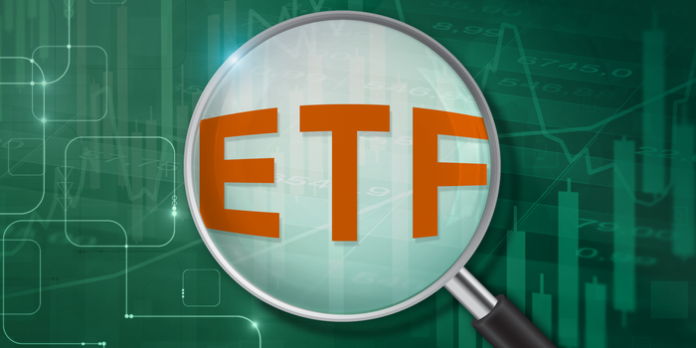ETFs
In today’s fast-paced world of finance, investors are constantly seeking innovative ways to diversify their portfolios, maximize returns, and manage risk. One such tool that has gained significant popularity in recent years is the Exchange-Traded Fund.Exchange-Traded Funds ETFs have revolutionized the investment landscape, offering a plethora of benefits and opportunities for investors of all backgrounds. In this blog, we’ll explore what ETFs are, how they work, and why they have become an essential component of modern investment strategies.
What are ETFs?
An Exchange-Traded Fund is a type of investment fund that holds assets such as stocks, bonds, commodities, or a combination thereof. Similar to mutual funds, ETFs pool money from multiple investors to purchase a diversified portfolio of securities. However, unlike traditional mutual funds, ETFs are traded on stock exchanges, allowing investors to buy and sell shares throughout the trading day at market prices.
How do ETFs Work?
ETFs are designed to track the performance of a specific index, sector, commodity, or asset class. For example, a stock Exchange-Traded Funds may aim to replicate the performance of a benchmark index like the S&P 500, while a bond ETF may seek to mirror the returns of a fixed-income index such as the Bloomberg Barclays U.S. Aggregate Bond Index.
ETFs use a creation and redemption mechanism to maintain their market value close to the net asset value (NAV) of the underlying securities. Authorized participants, typically large financial institutions, can create or redeem shares of an ETF by exchanging a basket of underlying assets with the ETF issuer. This process helps keep the ETF’s market price in line with its intrinsic value.
Why Invest in Exchange-Traded Funds ?
- Diversification:Exchange-Traded Funds provide investors with instant diversification across a wide range of assets within a single investment vehicle. By holding a basket of securities, Exchange-Traded Funds help spread risk and reduce the impact of individual stock or bond performance on the overall portfolio.
- Liquidity: Since Exchange-Traded Funds trade on stock exchanges, investors can buy or sell shares at any time during market hours at prevailing market prices. This liquidity offers flexibility and allows investors to react quickly to changing market conditions.
- Low Costs: Exchange-Traded Funds typically have lower expense ratios compared to actively managed mutual funds, making them a cost-effective investment option. Additionally, Exchange-Traded Funds often have lower turnover and tax efficiency due to their passive investment approach.
- Transparency: Most Exchange-Traded Funds disclose their holdings on a daily basis, providing investors with transparency and visibility into the underlying assets. This transparency helps investors understand the composition of their portfolios and make informed investment decisions.
- Flexibility: Exchange-Traded Funds offer exposure to a wide range of asset classes, sectors, and investment strategies, allowing investors to customize their portfolios based on their risk tolerance, investment objectives, and market outlook.
Types of ETFs
ETFs come in various types and styles to suit different investment preferences:
- Equity ETFs: Invest in stocks of companies within a specific market, sector, or region.
- Fixed-Income Exchange-Traded Funds : Hold bonds or other fixed-income securities, providing income and capital preservation.
- Commodity Exchange-Traded Funds : Track the price of commodities such as gold, silver, oil, or agricultural products.
- Sector Exchange-Traded Funds : Focus on specific sectors of the economy, such as technology, healthcare, or energy.
- International Exchange-Traded Funds : Provide exposure to foreign markets and economies outside the investor’s home country.
- Thematic Exchange-Traded Funds Invest in companies aligned with specific themes or trends, such as renewable energy, cybersecurity, or artificial intelligence.
Conclusion
Exchange-Traded Funds have emerged as a versatile and powerful investment tool, offering investors access to diversified portfolios, liquidity, low costs, transparency, and flexibility. Whether you’re a seasoned investor looking to fine-tune your portfolio or a novice investor seeking a simple yet effective way to invest, Exchange-Traded Funds can play a valuable role in achieving your financial goals.
With a wide range of Exchange-Traded Funds available across asset classes and investment strategies, investors have the opportunity to build well-diversified portfolios tailored to their individual preferences and objectives. As always, it’s essential to conduct thorough research, assess your risk tolerance, and consult with a financial advisor before investing in Exchange-Traded Funds ETFs or any other financial instrument.






Hey people!!!!!
Good mood and good luck to everyone!!!!!
Hey people!!!!!
Good mood and good luck to everyone!!!!!
Travel comfortably and without worries, at any time convenient for you with favorable rates for a long period of time.
Useful information about double glazed windows in Melbournewindow and door manufacturers bestnosefiller.com .